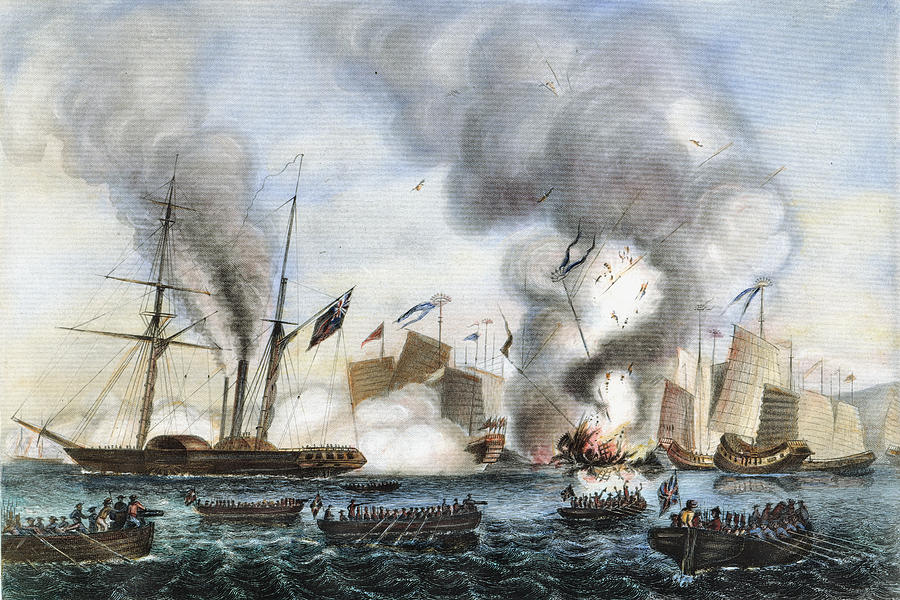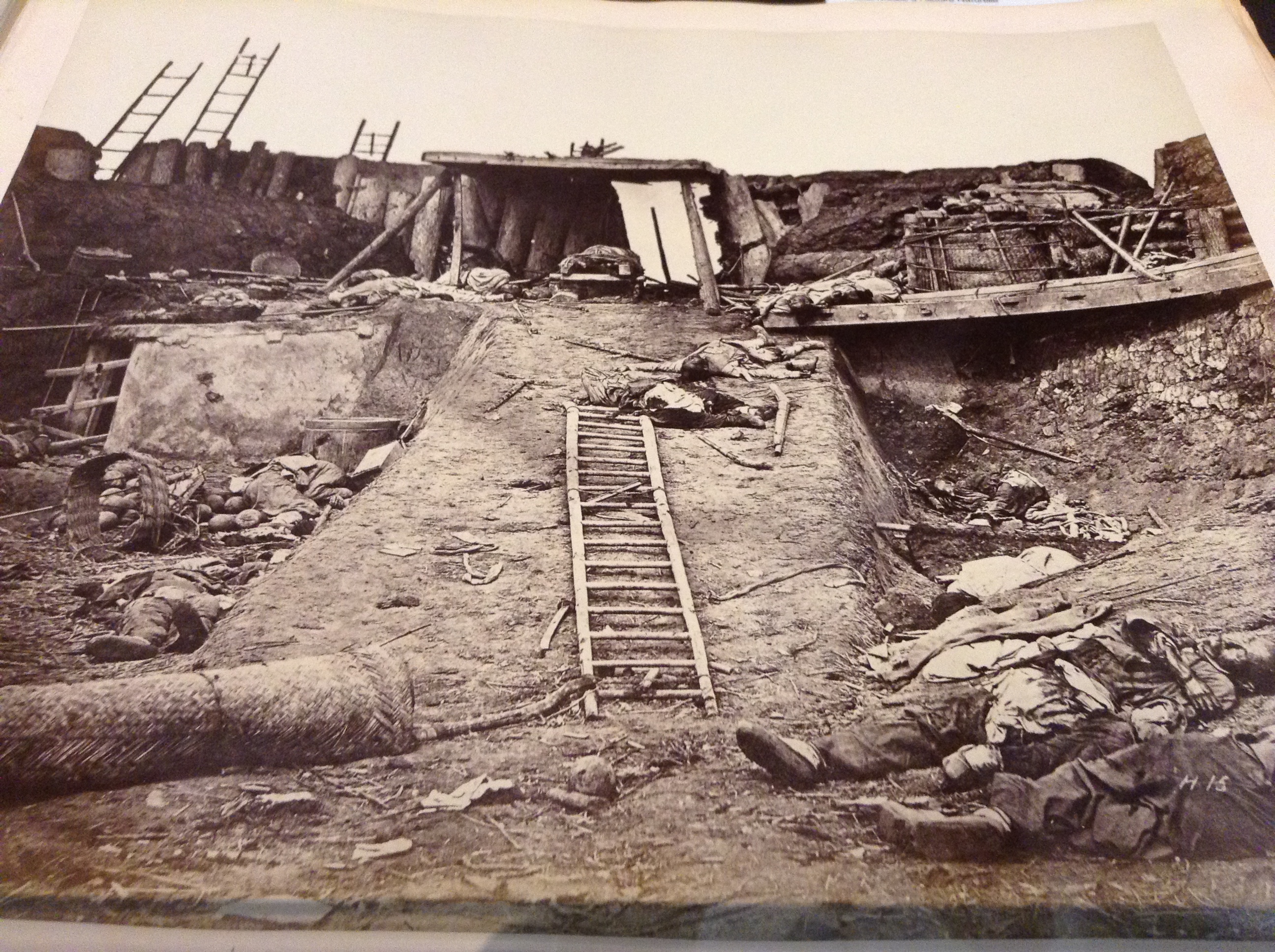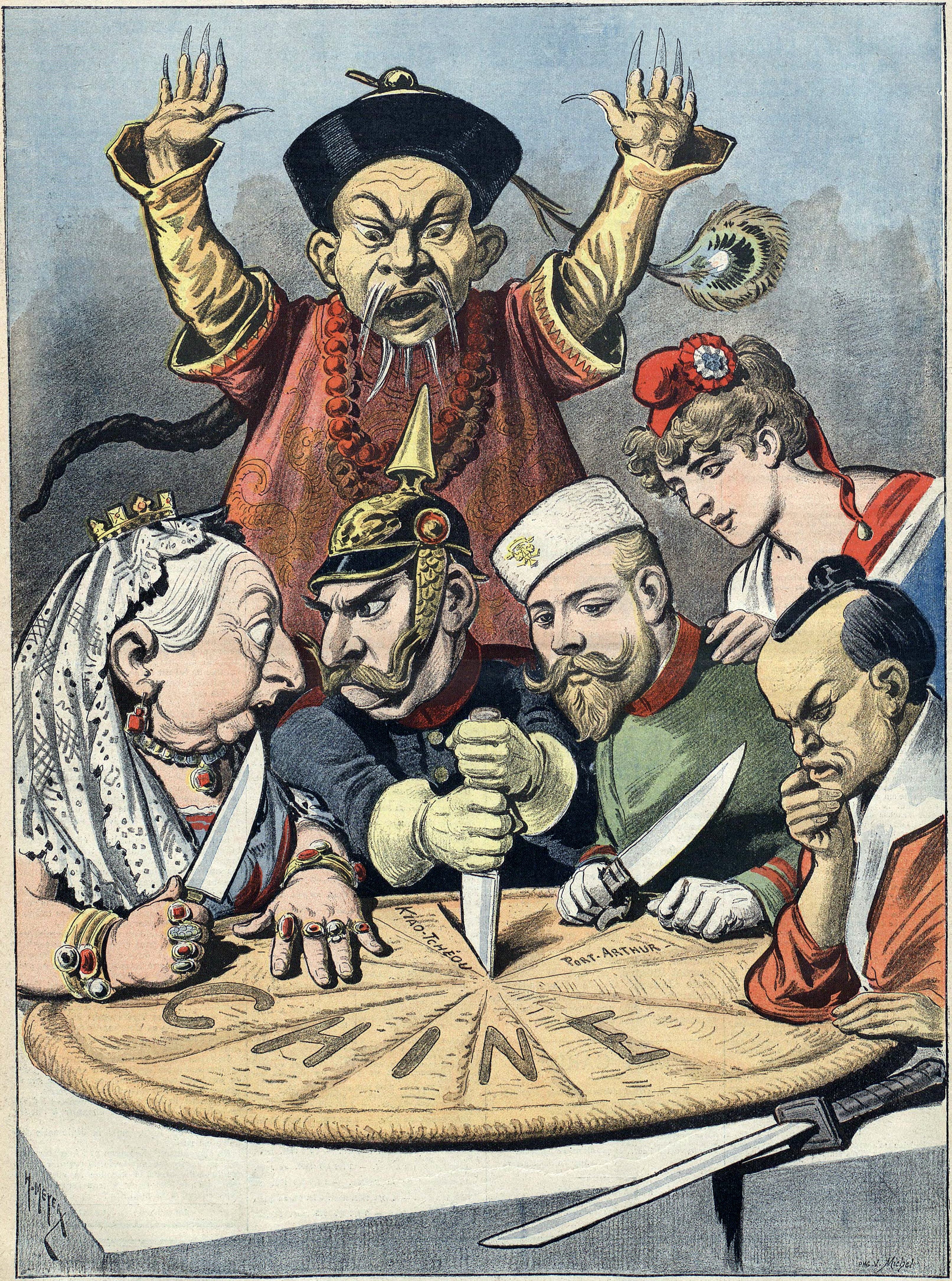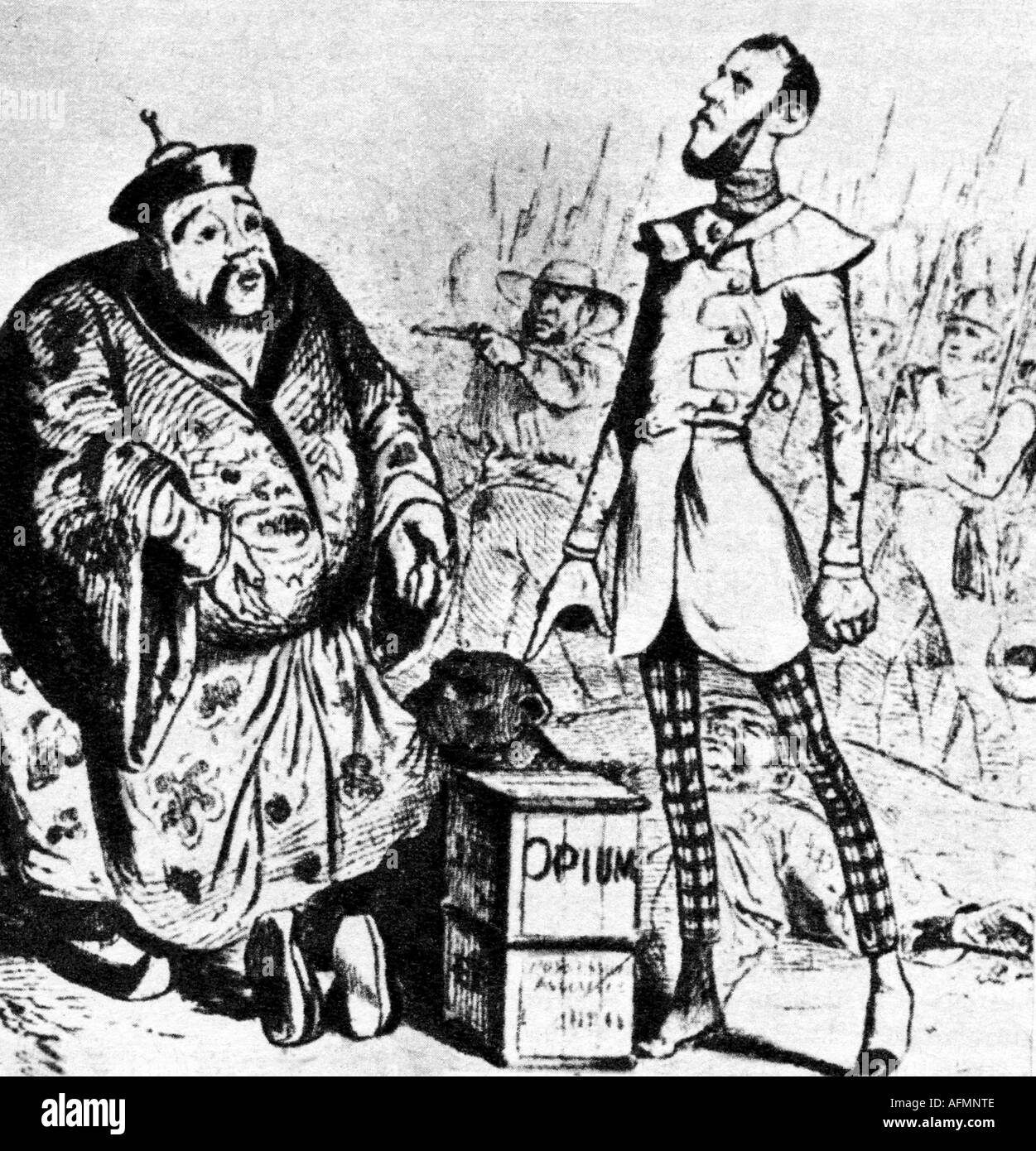By Sebastien Roblin

It’s hard to over-emphasize the impact of the Opium Wars on modern China.
Domestically, it’s led to the ultimate collapse of the centuries-old Qing Dynasty, and with it more than two millennia of dynastic rule.
It convinced China that it had to modernize and industrialize.
Today, the First Opium War is taught in Chinese schools as being the beginning of the “Century of Humiliation” — the end of that “century” coming in 1949 with the reunification of China under Mao. Chinese schools teach students that their country was humiliated by greedy and technologically superior Western imperialists.
The Opium Wars made it clear China had fallen gravely behind the West — not just militarily, but economically and politically.
Today, the First Opium War is taught in Chinese schools as being the beginning of the “Century of Humiliation” — the end of that “century” coming in 1949 with the reunification of China under Mao. Chinese schools teach students that their country was humiliated by greedy and technologically superior Western imperialists.
The Opium Wars made it clear China had fallen gravely behind the West — not just militarily, but economically and politically.
Every Chinese government since — even the ill-fated Qing Dynasty, which began the “Self-Strengthening Movement” after the Second Opium War — has made modernization an explicit goal, citing the need to catch up with the West.
In 1839, England went to war with China because it was upset that Chinese officials had shut down its drug trafficking racket and confiscated its dope.
Stating the historical record so plainly is shocking — but it’s true, and the consequences of that act are still being felt today.
The Qing Dynasty, founded by Manchurian clans in 1644, expanded China’s borders to their farthest reach, conquering Tibet, Taiwan and the Uighur Empire.
However, the Qing then turned inward and isolationist, refusing to accept Western ambassadors because they were unwilling to proclaim the Qing Dynasty as supreme above their own heads of state.
Foreigners — even on trade ships — were prohibited entry into Chinese territory.
The exception to the rule was in Canton, the southeastern region centered on modern-day Guangdong Province, which adjoins Hong Kong and Macao.
Foreigners — even on trade ships — were prohibited entry into Chinese territory.
The exception to the rule was in Canton, the southeastern region centered on modern-day Guangdong Province, which adjoins Hong Kong and Macao.
Foreigners were allowed to trade in the Thirteen Factories district in the city of Guangzhou, with payments made exclusively in silver.
The British gave the East India Company a monopoly on trade with China, and soon ships based in colonial India were vigorously exchanging silver for tea and porcelain.
The British gave the East India Company a monopoly on trade with China, and soon ships based in colonial India were vigorously exchanging silver for tea and porcelain.
But the British had a limited supply of silver.
Starting in in the mid-1700s, the British began trading opium grown in India in exchange for silver from Chinese merchants.
Starting in in the mid-1700s, the British began trading opium grown in India in exchange for silver from Chinese merchants.
Opium — an addictive drug that today is refined into heroin — was illegal in England, but was used in Chinese traditional medicine.
However, recreational use was illegal and not widespread.
However, recreational use was illegal and not widespread.
That changed as the British began shipping in tons of the drug using a combination of commercial loopholes and outright smuggling to get around the ban.
Chinese officials taking their own cut abetted the practice.
Chinese officials taking their own cut abetted the practice.
American ships carrying Turkish-grown opium joined in the narcotics bonanza in the early 1800s. Consumption of opium in China skyrocketed, as did profits.
The Daoguang Emperor became alarmed by the millions of drug addicts — and the flow of silver leaving China.
The Daoguang Emperor became alarmed by the millions of drug addicts — and the flow of silver leaving China.
As is often the case, the actions of a stubborn official brought the conflict to a head.
In 1839 the newly appointed Imperial Commissioner Lin Zexu instituted laws banning opium throughout China.
He arrested 1,700 dealers, and seized the crates of the drug already in Chinese harbors and even on ships at sea.
He arrested 1,700 dealers, and seized the crates of the drug already in Chinese harbors and even on ships at sea.
He then had them all destroyed.
That amounted to 2.6 million pounds of opium thrown into the ocean.
Lin even wrote a poem apologizing to the sea gods for the pollution.
British traders got the British government to promise compensation for the lost drugs, but the treasury couldn’t afford it.
British traders got the British government to promise compensation for the lost drugs, but the treasury couldn’t afford it.
War would resolve the debt.
But the first shots were fired when the Chinese objected to the British attacking one of their own merchant ships.
Chinese authorities had indicated they would allow trade to resume in non-opium goods.
But the first shots were fired when the Chinese objected to the British attacking one of their own merchant ships.
Chinese authorities had indicated they would allow trade to resume in non-opium goods.
Lin Zexu even sent a letter to Queen Victoria pointing out that as England had a ban on the opium trade, they were justified in instituting one too.
It never reached her, but eventually did appear in the Sunday Times.
Instead, the Royal Navy established a blockade around Pearl Bay to protest the restriction of free trade.
It never reached her, but eventually did appear in the Sunday Times.
Instead, the Royal Navy established a blockade around Pearl Bay to protest the restriction of free trade.
Two British ships carrying cotton sought to run the blockade in November 1839.
When the Royal Navy fired a warning shot at the second, The Royal Saxon, the Chinese sent a squadron of war junks and fire-rafts to escort the merchant.
HMS Volage’s captain, unwilling to tolerate the Chinese “intimidation,” fired a broadside at the Chinese ships.
HMS Volage’s captain, unwilling to tolerate the Chinese “intimidation,” fired a broadside at the Chinese ships.
HMS Hyacinth joined in.
One of the Chinese ships exploded and three more were sunk.

Their return fire wounded one British sailor.
Seven months later, a full-scale expeditionary force of 44 British ships launched an invasion of Canton.
Seven months later, a full-scale expeditionary force of 44 British ships launched an invasion of Canton.
The British had steam ships, heavy cannon, Congreve rockets and infantry equipped with rifles capable of accurate long range fire.
Chinese state troops — “bannermen” — were still equipped with matchlocks accurate only up to 50 yards and a rate of fire of one round per minute.
Antiquated Chinese warships were swiftly destroyed by the Royal Navy.
Antiquated Chinese warships were swiftly destroyed by the Royal Navy.
British ships sailed up the Zhujiang and Yangtze rivers, occupying Shanghai along the way and seizing tax-collection barges, strangling the Qing government’s finances.
Chinese armies suffered defeat after defeat.
When the Qing sued for peace in 1842, the British could set their own terms.
The Treaty of Nanjing stipulated that Hong Kong would become a British territory, and that China would be forced to establish five treaty ports in which British traders could trade anything they wanted with anybody they wanted to.
A later treaty forced the Chinese to formally recognize the British as equals and grant their traders favored status.


The Signing of the Treaty of Nanking
Imperialism was on the upswing by the mid-1800s.
France muscled into the treaty port business as well in 1843.
The British soon wanted even more concessions from China — unrestricted trade at any port, embassies in Beijing and an end to bans on selling opium in the Chinese mainland.
One tactic the British used to further their influence was registering the ships of Chinese traders they dealt with as British ships.
The pretext for the second Opium War is comical in its absurdity.
The pretext for the second Opium War is comical in its absurdity.
In October 1856, Chinese authorities seized a former pirate ship, the Arrow, with a Chinese crew and with an expired British registration.
The captain told British authorities that the Chinese police had taken down the flag of a British ship.
The British demanded the Chinese governor release the crew.
The British demanded the Chinese governor release the crew.
When only nine of the 14 returned, the British began a bombardment of the Chinese forts around Canton and eventually blasted open the city walls.
British Liberals, under William Gladstone, were upset at the rapid escalation and protested fighting a new war for the sake of the opium trade in parliament.
British Liberals, under William Gladstone, were upset at the rapid escalation and protested fighting a new war for the sake of the opium trade in parliament.
However, they lost seats in an election to the Tories under Lord Palmerston.
He secured the support needed to prosecute the war.
China was in no position to fight back, as it was then embroiled in the devastating Taiping Rebellion, a peasant uprising led by a failed civil-service examinee claiming to be the brother of Jesus Christ. The rebels had nearly seized Beijing and still controlled much of the country.
Once again, the Royal Navy demolished its Chinese opponents, sinking 23 junks in the opening engagement near Hong Kong and seizing Guangzhou.
China was in no position to fight back, as it was then embroiled in the devastating Taiping Rebellion, a peasant uprising led by a failed civil-service examinee claiming to be the brother of Jesus Christ. The rebels had nearly seized Beijing and still controlled much of the country.
Once again, the Royal Navy demolished its Chinese opponents, sinking 23 junks in the opening engagement near Hong Kong and seizing Guangzhou.
Over the next three years, British ships worked their way up the river, capturing several Chinese forts through a combination of naval bombardment and amphibious assault.
France joined in the war — its excuse was the execution of a French missionary who had defied the ban on foreigners in Guangxi province.
France joined in the war — its excuse was the execution of a French missionary who had defied the ban on foreigners in Guangxi province.
Even the United States became briefly involved after a Chinese fort took pot shots at long distance at an American ship.
In the Battle of the Pearl River Forts, a U.S. Navy force of three ships and 287 sailors and marines took four forts by storm, capturing 176 cannons and fighting off a counterattack of 3,000 Chinese infantry.
In the Battle of the Pearl River Forts, a U.S. Navy force of three ships and 287 sailors and marines took four forts by storm, capturing 176 cannons and fighting off a counterattack of 3,000 Chinese infantry.
The United States remained officially neutral.
Russia did not join in the fighting, but used the war to pressure China into ceding a large chunk of its northeastern territory, including the present-day city of Vladivostok.
Russia did not join in the fighting, but used the war to pressure China into ceding a large chunk of its northeastern territory, including the present-day city of Vladivostok.

When foreign envoys drew up the next treaty in 1858 the terms, were even more crushing to the Qing Dynasty’s authority.
Ten more cities were designated as treaty ports, foreigners would have free access to the Yangtze river and the Chinese mainland, and Beijing would open embassies to England, France and Russia.
The Xianfeng Emperor at first agreed to the treaty, but then changed his mind, sending Mongolian general Sengge Rinchen to man the Taku Forts on the waterway leading to Beijing.
The Xianfeng Emperor at first agreed to the treaty, but then changed his mind, sending Mongolian general Sengge Rinchen to man the Taku Forts on the waterway leading to Beijing.
The Chinese repelled a British attempt to take the forts by sea in June 1859, sinking four British ships.
A year later, an overland assault by 11,000 British and 6,700 French troops succeeded.
When a British diplomatic mission came to insist on adherence to the treaty, the Chinese took the envoy hostage, and tortured many in the delegation to death.
When a British diplomatic mission came to insist on adherence to the treaty, the Chinese took the envoy hostage, and tortured many in the delegation to death.
The British High Commissioner of Chinese Affairs, Lord Elgar, decided to assert dominance and sent the army into Beijing.
British and French rifles gunned down 10,000 charging Mongolian cavalrymen at the Battle of Eight Mile Bridge, leaving Beijing defenseless.
British and French rifles gunned down 10,000 charging Mongolian cavalrymen at the Battle of Eight Mile Bridge, leaving Beijing defenseless.
Emperor Xianfeng fled.
In order to wound the Emperor’s “pride as well as his feeling” in the words of Lord Elgar, British and French troops looted and destroyed the historic Summer Palace.

The new revised treaty imposed on China legalized both Christianity and opium, and added Tianjin — the major city close to Beijing — to the list of treaty ports.
It allowed British ships to transport Chinese indentured laborers to the United States, and fined the Chinese government eight million silver dollars in indemnities.
The Western presence in China became so ubiquitous, and so widely detested, that an anti-Western popular revolt, the Boxer Rebellion, broke out in 1899.
The hapless Qing Dynasty, under the stewardship of Dowager Empress Cixi, first tried to clamp down on the violence before throwing its support behind it — just in time for a multi-national military force of U.S., Russian, German, Austrian, Italian, French, Japanese and British troops to arrive and put down the rebellion.
It then spent an entire year looting Beijing, Tianjin and the surrounding countryside in reprisal.
It then spent an entire year looting Beijing, Tianjin and the surrounding countryside in reprisal.
It’s hard to over-emphasize the impact of the Opium Wars on modern China.
Domestically, it’s led to the ultimate collapse of the centuries-old Qing Dynasty, and with it more than two millennia of dynastic rule.
It convinced China that it had to modernize and industrialize.
Today, the First Opium War is taught in Chinese schools as being the beginning of the “Century of Humiliation” — the end of that “century” coming in 1949 with the reunification of China under Mao. Chinese schools teach students that their country was humiliated by greedy and technologically superior Western imperialists.
The Opium Wars made it clear China had fallen gravely behind the West — not just militarily, but economically and politically.
The Opium Wars made it clear China had fallen gravely behind the West — not just militarily, but economically and politically.
Every Chinese government since — even the ill-fated Qing Dynasty, which began the “Self-Strengthening Movement” after the Second Opium War — has made modernization an explicit goal, citing the need to catch up with the West.
The Japanese, observing events in China, instituted the same discourse and modernized more rapidly than China did during the Meiji Restoration.
Mainland Chinese citizens still frequently measure China in comparison to Western countries. Economic and quality of life issues are by far their main concern.
The Japanese, observing events in China, instituted the same discourse and modernized more rapidly than China did during the Meiji Restoration.
Mainland Chinese citizens still frequently measure China in comparison to Western countries. Economic and quality of life issues are by far their main concern.
But state media also holds military parity as a goal.
I once saw a news program on Chinese public television boasting about China’s new aircraft carrier Liaoning — before comparing it to an American carrier.
I once saw a news program on Chinese public television boasting about China’s new aircraft carrier Liaoning — before comparing it to an American carrier.
“They’re saying ours is still a lot smaller,” a high school student pointed out to me. “And we have only one.”
Through most of Chinese history, China’s main threat came from nomadic horse-riding tribes along its long northern border.
Through most of Chinese history, China’s main threat came from nomadic horse-riding tribes along its long northern border.
Even in the Cold War, hostility with the Soviet Union made its Mongolian border a security hot spot. But the Opium Wars — and even worse, the Japanese invasion in 1937 — demonstrated how China was vulnerable to naval power along its Pacific coast.
China’s aggressive naval expansion in the South China Sea can be seen as the acts of a nation that has succumbed repeatedly to naval invasions — and wishes to claims dominance of its side of the Pacific in the 21st century.
The history with opium also has led China to adopt a particularly harsh anti-narcotics policy with the death penalty applicable even to mid-level traffickers.
China’s aggressive naval expansion in the South China Sea can be seen as the acts of a nation that has succumbed repeatedly to naval invasions — and wishes to claims dominance of its side of the Pacific in the 21st century.
The history with opium also has led China to adopt a particularly harsh anti-narcotics policy with the death penalty applicable even to mid-level traffickers.
Drug-trafficking and organized crime remain a problem, however.
The explosion of celebrity culture in China has also led to punitive crackdowns on those caught partaking in “decadent lifestyles,” leading to prominent campaigns of public shaming.
For example, in 2014 police arrested Jaycee Chan, son of Jackie Chan, for possessing 100 grams of marijuana.
For example, in 2014 police arrested Jaycee Chan, son of Jackie Chan, for possessing 100 grams of marijuana.
His father stated he wouldn’t plead for his son to avoid imprisonment.


Aucun commentaire:
Enregistrer un commentaire